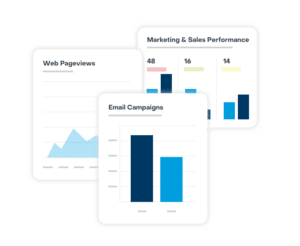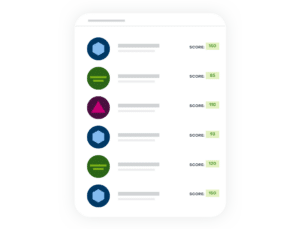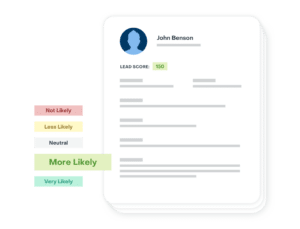Why and How to Improve Audience Segmentation for B2B Marketing
We live in a hyper-personalized world—so getting the right message, to the right person, at the right time, on the right channel is essential for marketers.
For the uninitiated, marketers segment their audiences (i.e., mailing lists) into smaller groups with similar characteristics, wants, and needs based on their communication objectives. Why, you may ask? Because smaller groups of recipients, when targeted with the right message, are much more likely to engage with your content.
As a marketer, how can one start segmenting their audience? For starters, using a marketing automation platform integrated with a CRM system to serve specific prospects or customers’ targeted information is quite attainable, as seamless marketing automation and CRM integration continuously syncs leads and contacts information, preferences, engagement history, and may even make accurate predictions about future actions.
Why Audience Segmentation Matters
Let’s take the following example: you have several different messages you want to use to target your prospects—one for decision-makers and one for decision influencers, one about an event in New York and one about an event in Atlanta. How do you know which message is right for which prospect? In addition to differentiating people based on more static characteristics like influence level and location, you also need to consider dynamic characteristics, such as their stage in the buyer’s journey, since someone who has just entered the sales cycle requires a higher level message than someone who is further down the funnel. Manually combing through your lists and handpicking people who fit your segments is simply not a viable strategy.
Enter audience segmentation. Splitting your prospects and customers based on key characteristics can help you deliver personalized outreach by making it easy to engage with only a specific group of people for whom a very tailored message is relevant. In turn, these value-add messages should help increase engagement and keep moving prospects further down the funnel. Additionally, segmenting your target lists can help you create highly detailed profiles and data-driven personas, reducing your chances of serving irrelevant content.
How to Improve Your Segmentation
If personalization is the route to improved customer engagement and segmentation is the route to personalization, how can you improve your segmentation tactics?
We recommend breaking down users by various segments, as the way you target people might differ from one campaign to the next, based on your goals. Additionally, the more segments you can create, the more targeted you can be.
To get you started on your audience segments, we’ve prepared a list of ten characteristics:
Static Characteristics
First, we have static characteristics. These describe the outward-facing attributes of a person. While these may change over time, the pace of change for any individual is likely to be on the slower side. As such, these static characteristics tend to create slightly broader categories:
- Location
- Function
- Role Level
- Industry
- Company size
Dynamic Characteristics
While static characteristics are less likely to change, dynamic characteristics change far more quickly for any individual and create much more specific audience groups. These tell you their actions and give you clues into their broader perceptions, interests, and mindsets.
Segmenting with these dynamic characteristics gives that extra boost toward intelligent, personalized engagement:
- Purchase History (e.g., customers who purchased product X)
- Indicated Preferences (e.g., preferred channel, frequency and/or timing for outreach)
- Previous Interactions (e.g., frequency, passive vs. active interactions, channels of interaction)
- Personal History (e.g., any personal interests or related accounts of note, such as people who are also active LinkedIn users)
- Stage in Buyer’s Journey (since someone who has just entered the sales cycle will require a different approach than someone who is further down the funnel)
In addition to these ten characteristics, some marketing automation platforms leverage artificial intelligence to further improve your audience segments. For instance, Sugar Market leverages your leads’ and customers’ past engagement history to reveal how likely they will engage with your personalized messaging through predictive scoring.
Audience Segmentation is a Must
Customer segmentation is at the heart of good marketing. If not executed with enough detail, you run the risk of becoming too broad in your targeting and turning potential customers away. Taking the time to segment your audience with the most up-to-date, in-depth data pays off in the long term, as you can further use it to position your brand and place your product in front of each segment and narrow down your key value propositions.
Likewise, CRM and marketing automation is the lifeblood of proper segmentation and the first thing you should strive for when considering personalized messaging for your audience. If you would like to learn more about CRM and marketing automation working together, we’ve put together this eBook to help you learn why it’s important.




